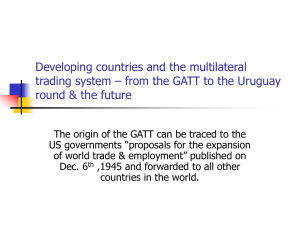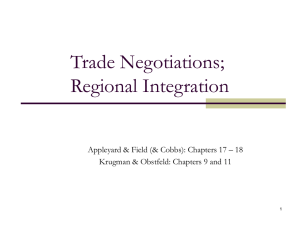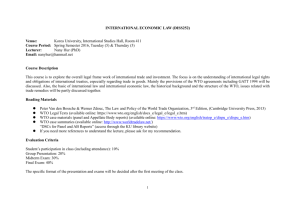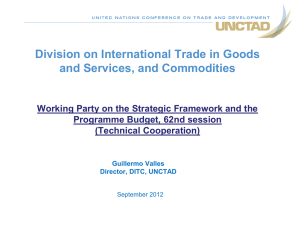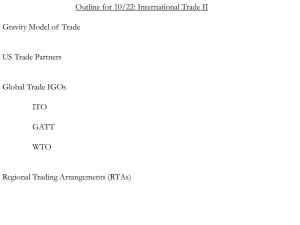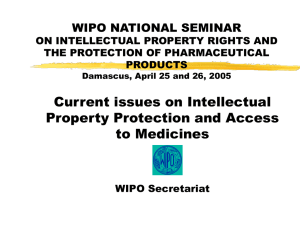International Cooperation Among Nations
advertisement
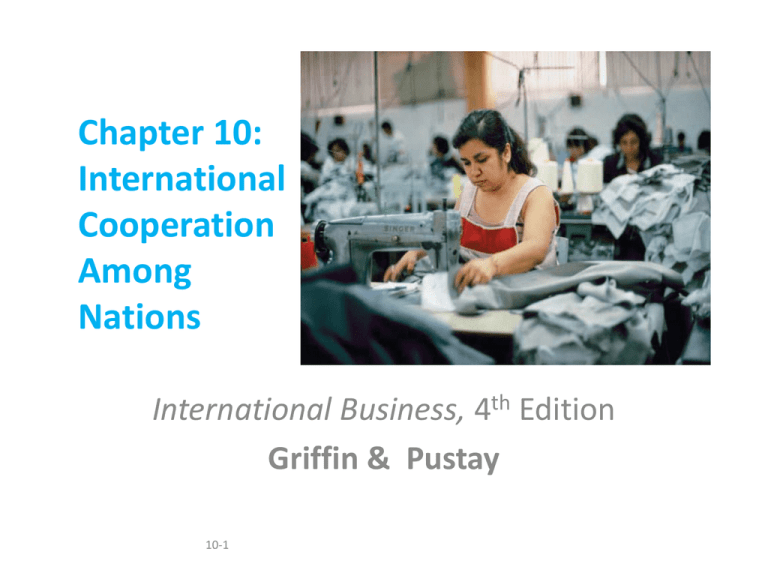
Chapter 10: International Cooperation Among Nations International Business, 4th Edition Griffin & Pustay 10-1 General Agreements on Tariffs and Trade (GATT) • Developed as part of the Havana, Cuba conference in 1947 • Provided forum for trade ministers to discuss barriers to international trade • Goal: to promote a free and competitive international trading environment benefiting efficient producers • Accomplished by sponsoring multilateral negotiations to reduce tariffs, quotas, and other nontariff barriers General Agreements on Tariffs and Trade (GATT) • To help international businesses compete in world markets regardless of their nationality, the GATT sought to ensure that international trade was conducted on a nondiscriminatory basis. This was accomplished through the use of the most favored nation (MFN) principle. • That means, any preferential treatment granted to one country must be extended to all countries. GATT Negotiating Rounds Round Dates # of Participants Average Tariff Cut (%) Geneva 1947 23 35 Annecy 1949 13 NA Torquay 1950-1951 38 25 Geneva 1956 26 NA Dillon 1960-1962 45 NA Kennedy 1964-1967 62 35 Tokyo 1973-1979 99 33 Uruguay 1986-1994 117 36 ©2004 Prentice Hall 10-4 World Trade Organization (WTO) • In January 1995, GATT was replaced by the World Trade Organization (WTO), which adopted the GATT’s mission. • Its Headquarter is in Geneva, Switzerland • As of September 2003, the WTO included 146 member and 30 observer countries. • Members are required to open their markets to international trade and to follow the WTO’s rules. World Trade Organization • The WTO has three primary goals: 1. Promote trade flows by encouraging nations to adopt nondiscriminatory, predictable trade policies. 2. Reduce remaining trade barriers through multilateral negotiations 3. Establish impartial procedures for resolving trade disputes among members. Differences between WTO and GATT • GATT focused on promoting trade in goods; WTO’s mandate includes – – – – trade in goods trade in services international intellectual property protection trade-related investment • WTO’s enforcement powers are stronger Enforcement of WTO Decisions • Country failing to live up to the agreement may have a complaint filed against it • WTO panel evaluates complaint • If found in violation, the country may be asked to eliminate the trade barrier • If country refuses, WTO will allow complaining country to impose comparable trade barriers on the offending country Major Challenges of WTO 1. The General Agreement on Trade in Services (GATS): One challenge facing the WTO is reducing barriers to trade in services. The Uruguay round developed a set of principles under which such trade should be conducted. For instance, government controls on service trade should be administered in a nondiscriminatory fashion. Major Challenges of WTO 2. Agreement on Trade-related Aspects of Intellectual Property Rights (TRIPS): Entrepreneurs, artists, and inventors have been hurt by inadequate enforcement by many countries of laws prohibiting illegal usage, copying, or counterfeiting of intellectual property. These problems are particularly widespread in the music, filmed, entertainment, and computer software industries. • The Uruguay round agreement substantially strengthened the protection granted to owners of intellectual property rights and developed enforcement and dispute settlement to punish violators. Major Challenges of WTO • However, because most such owners reside in developed countries, and many violators live in developing countries, this caused officials from these countries to argue that the Uruguay Round’s protection of intellectual property must be relaxed in the case of life saving drugs consumed in less developed countries. Major Challenges of WTO 3. Trade Related Investment Measures Agreement (TRIMS): The TRIMS agreement in the Uruguay Round started eliminating national regulations on FDI that may distort or restrict trade. But the TRIMS agreement affects: • Trade-balancing rules: Countries may not require foreign investors to limit their imports of inputs to an amount equal to their exports of local production. Major Challenges of WTO • Foreign –exchange access: Countries may not restrict foreign investors’ access to foreign exchange. • Domestic sales requirement: Countries may not require the investors to sell a percentage of a factory’s output in the local market. Forms or stages of Economic Integration Regional economic integration means, a form of integration in which a group of countries located in the same geographic area, decide to cooperate. • Free Trade Area • Customs Union • Common Market • Economic Union Forms of Economic Integration Other Regional Trading Blocs • The European Union (EU) • The North American Free Trade Agreement (NAFTA) • Association of Southeast Asian Nations (ASEAN)

